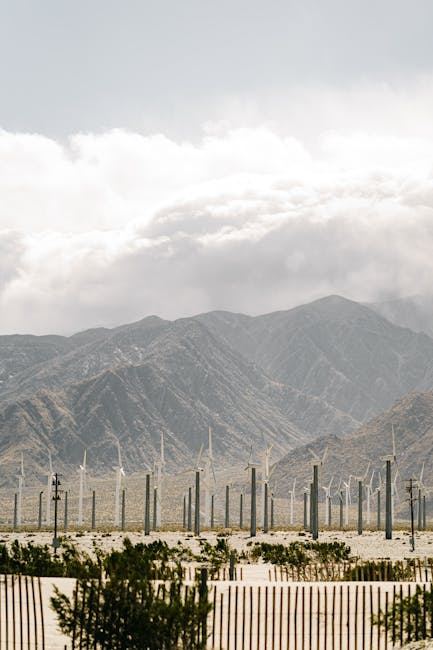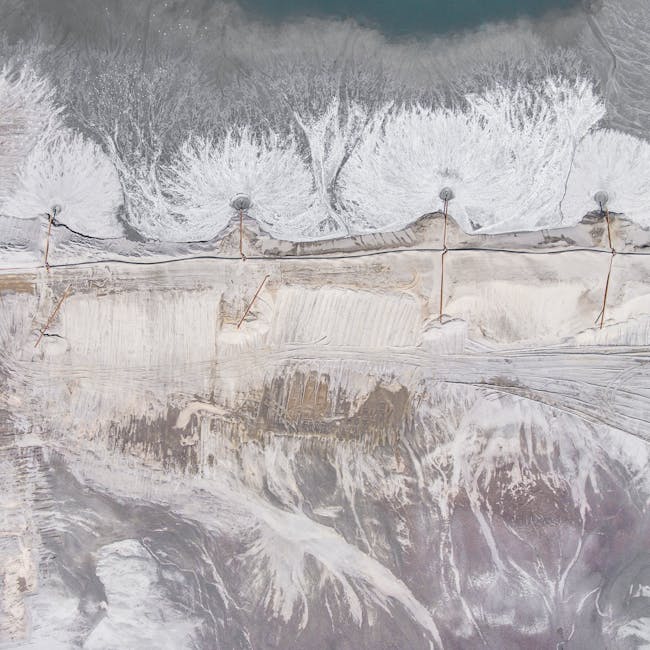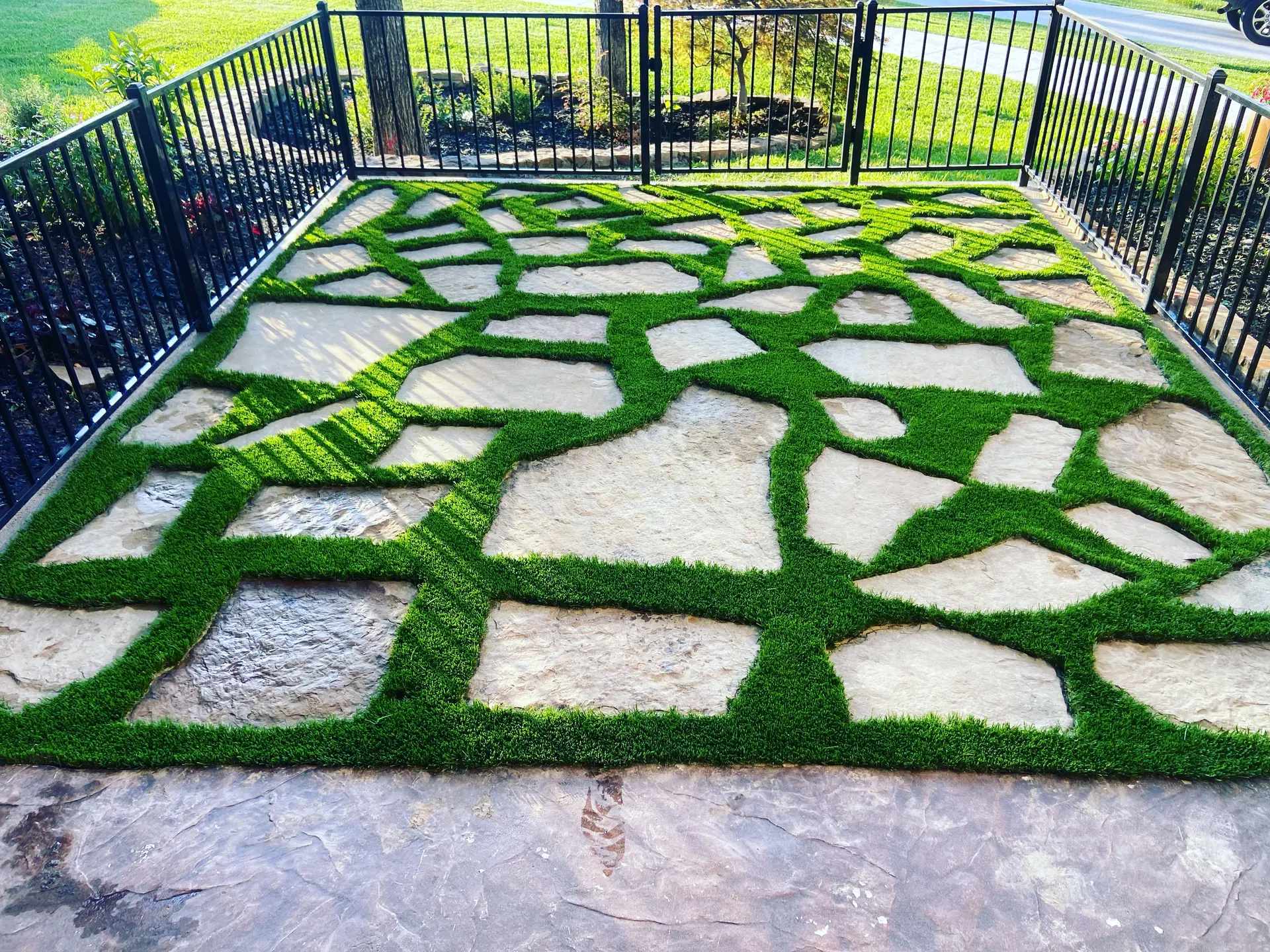
Introduction to Sustainable Landscaping
Sustainable landscaping encompasses a range of practices aimed at creating attractive outdoor spaces that are environmentally responsible and resource-efficient. This approach seeks to mitigate adverse environmental impacts while conserving natural resources. Traditional landscaping often requires significant amounts of water, fertilizers, and pesticides, leading to environmental degradation. In contrast, sustainable landscaping focuses on using eco-friendly materials, reducing water consumption, and minimizing chemical usage.
One of the driving factors behind the adoption of sustainable landscaping practices is the increasing awareness of environmental issues such as climate change, water scarcity, and biodiversity loss. The shift towards sustainability not only helps in conserving the environment but also in creating resilient landscapes that can withstand extreme weather conditions and other environmental stresses.
Key principles of sustainable landscaping include:
- Water Efficiency: Implementing irrigation systems that reduce water usage, selecting drought-tolerant plants, and using mulch to retain soil moisture.
- Soil Health: Enhancing soil quality through organic amendments and reducing soil erosion using ground covers and proper grading techniques.
- Plant Selection: Choosing native and climate-appropriate plants that require less water and are better suited to local conditions.
- Wildlife Support: Creating habitats that support local wildlife, including birds, bees, and other beneficial insects.
- Waste Reduction: Composting yard waste, using recycled materials for landscaping, and reducing reliance on chemical fertilizers and pesticides.
Amid these principles, the use of artificial grass has emerged as a popular sustainable landscaping solution, particularly in regions prone to drought. By eliminating the need for watering and mowing, artificial grass offers a low-maintenance alternative that conserves water and reduces carbon emissions from gas-powered lawn equipment.
However, the adoption of artificial grass in sustainable landscaping is not without controversy. While it presents clear water-saving benefits, questions remain regarding its environmental footprint, including the production, disposal, and impact on local ecosystems. Thus, a comprehensive examination of both the advantages and potential drawbacks is essential for making informed decisions about its use in sustainable landscaping initiatives.
Environmental Challenges in Drought-Prone Regions
Drought-prone regions face unique environmental challenges that significantly impact both ecosystems and human livelihood. These areas are characterized by prolonged periods of insufficient rainfall, leading to water scarcity and various environmental issues.
Water Scarcity is the most pressing challenge in drought-prone regions. Limited water availability affects agricultural productivity, drinking water supplies, and overall ecosystem health. According to the United Nations, around 1.2 billion people globally live in areas affected by physical water scarcity, with many of these regions experiencing recurring droughts.
In drought-prone areas, soil degradation is another significant concern. Water is essential for maintaining soil health and structure. Prolonged drought conditions can lead to soil erosion, reduced fertility, and increased salinity. The United States Department of Agriculture (USDA) notes that soil degradation can severely affect land usability and agricultural productivity, necessitating sustainable practices to mitigate these effects.
The loss of biodiversity is a critical issue in drought-affected regions. Native plant and animal species that rely on consistent water sources are often unable to survive prolonged dry periods. According to the World Wildlife Fund (WWF), drought and water scarcity threaten various species’ habitats, leading to reduced biodiversity and disrupted ecosystems.
Urban heat islands exacerbate the challenges posed by drought. Cities in drought-prone regions often experience higher temperatures than surrounding rural areas due to the extensive use of concrete and asphalt, which absorb and retain heat. The Environmental Protection Agency (EPA) highlights that urban heat islands increase energy consumption, elevate emissions of air pollutants, and contribute to heat-related illnesses.
Economic impacts in drought-prone regions are far-reaching. Water scarcity can increase costs for water extraction, treatment, and distribution. Additionally, drought can negatively affect agricultural outputs, leading to higher food prices and economic instability for communities reliant on farming. The World Bank estimates that droughts can cause losses amounting to hundreds of millions of dollars annually in affected regions.
Given these environmental challenges, sustainable landscaping practices, such as the adoption of artificial grass, are gaining attention. While artificial grass is not a catch-all solution, it offers a way to maintain green spaces without the extensive water requirements of natural grass, potentially alleviating some of the strain on water resources in drought-prone areas.
Overview of Artificial Grass
Artificial grass, also known as synthetic turf, has been increasingly adopted in drought-prone regions as a sustainable alternative to natural grass. This section provides an overview of the composition, types, and common applications of artificial grass.
Components and Composition
Artificial grass is typically composed of synthetic fibers made from materials such as polyethylene, polypropylene, or nylon. These fibers are designed to mimic the appearance and texture of natural grass. The backing material usually consists of layers of woven fabrics and a polyurethane or latex coating to provide stability and durability.
Types of Artificial Grass
There are several types of artificial grass, each designed to meet specific needs and applications:
- Landscape Turf: Primarily used for residential lawns, commercial properties, and public spaces. It aims to replicate the aesthetics of natural grass.
- Sports Turf: Engineered for high-impact activities and used in sports fields, including football, soccer, and golf. This type offers enhanced durability and performance under duress.
- Pet Turf: Specifically designed for areas frequently used by pets. It features properties like odor control and ease of cleaning.
- Recreational Turf: Used in playgrounds and recreational areas. It often includes extra padding to enhance safety.
Common Applications
Artificial grass is utilized in a variety of settings, each benefiting from its unique properties:
- Residential Lawns: Homeowners in drought-prone regions favor artificial grass for its low water requirements and minimal upkeep.
- Commercial Landscaping: Businesses and municipalities use synthetic turf for aesthetic enhancement and decreased landscape maintenance.
- Sports Fields: Many sports facilities have switched to artificial turf to ensure consistent surface quality and reduced maintenance costs.
- Public Parks and Playgrounds: Public spaces benefit from durable and safe surfaces provided by artificial grass, reducing the need for watering and upkeep.
By understanding the components, types, and applications of artificial grass, one can better appreciate its role and potential advantages in sustainable landscaping, particularly in areas facing water scarcity challenges.
Environmental Impact of Artificial Grass
Artificial grass, also known as synthetic turf, presents several environmental implications that need to be carefully considered, particularly in drought-prone regions. While it offers several advantages, such as reduced water usage, there are also critical environmental impacts to account for.
The manufacturing process of artificial turf involves the use of non-renewable resources, including petroleum-based plastics like polyethylene, polypropylene, and nylon. According to the Synthetic Turf Council, most of these materials are not biodegradable, contributing to long-term plastic waste issues. Additionally, the production process itself is energy-intensive, releasing greenhouse gases and other pollutants into the atmosphere.
Installation of artificial grass often requires a base layer of sand and rubber infill to hold the turf in place and enhance its durability. The rubber infill is usually made from recycled tires, which might initially appear environmentally friendly. However, studies such as one conducted by Environmental Research & Education Foundation have shown that these materials can leach chemicals into the soil and groundwater over time, posing potential risks to local ecosystems.
Artificial grass surfaces can affect local temperatures. Natural grass has a cooling effect through processes like transpiration, whereas synthetic turf can absorb and retain heat, leading to increased ground temperature. Research by the Environmental Protection Agency indicates that surface temperatures of artificial grass can be significantly higher than those of natural grass, sometimes up to 60 degrees Fahrenheit higher on sunny days.
While artificial grass eliminates the need for pesticides and fertilizers, which can harm local waterways and soil health, end-of-life disposal of synthetic turf remains a significant challenge. According to the Sports Turf Research Institute, artificial grass fields typically last about 8-10 years before they need replacement. Old turf, often ending up in landfills, adds to the burgeoning problem of plastic waste disposal.
Concerning biodiversity, artificial grass does not support local flora and fauna the way natural grass does. It provides no habitat for insects and small animals, which are crucial to the ecosystem’s balance. Moreover, replacing green spaces with synthetic materials can disrupt local wildlife patterns and reduce the overall biodiversity of an area.
Despite these environmental considerations, artificial grass offers specific advantages in water conservation, especially in drought-prone regions. Nevertheless, a comprehensive assessment of the environmental impact is necessary to make informed decisions. Stakeholders need to weigh both the benefits and the potential drawbacks carefully to achieve sustainable landscaping goals.
Comparative Water Usage: Natural Grass vs. Artificial Grass
Water usage is a critical factor in the evaluation of landscaping options, especially in drought-prone regions. Traditional natural grass lawns require substantial amounts of water to maintain their lush appearance. According to the Environmental Protection Agency (EPA), conventional turf grass lawns can require up to 55 gallons of water per square foot per year, depending on the climate and grass type.
During periods of drought, the water demand for maintaining natural grass exacerbates the stress on already limited water resources. This has led many municipalities to enforce water restrictions that limit the frequency and duration of lawn watering. As a result, lawns often suffer, turning brown and dry without adequate irrigation.
In contrast, artificial grass offers a solution that virtually eliminates the need for watering. Once installed, artificial turf requires minimal water, primarily for occasional rinsing to remove dust and debris. This significant reduction in water usage benefits regions struggling with prolonged drought conditions. By conserving water, artificial grass can help alleviate the pressure on local water supplies and contribute to a more sustainable water management strategy.
Empirical data also underscore the stark difference in water usage between natural and artificial grass. Studies have shown that replacing a 1,000 square foot lawn with artificial turf can save approximately 55,000 gallons of water annually. This amount would be otherwise used to maintain the same area of natural grass.
The water savings provided by artificial grass not only conserve a vital resource but also reduce the environmental footprint associated with lawn maintenance. Reduced water usage translates to decreased demand on water treatment facilities and pumping stations, leading to lower energy consumption and associated greenhouse gas emissions.
While artificial grass offers impressive water conservation benefits, it is important to consider these advantages within a broader context. Water savings alone present a compelling case for artificial turf in drought-prone regions, but it is essential to weigh them alongside other environmental impacts, such as production, disposal, and potential effects on local ecosystems, to make a fully informed decision.
Economic Considerations and Cost-Benefit Analysis
The economics of installing and maintaining artificial grass can be a significant factor for homeowners and municipalities alike, especially in drought-prone regions where water resources are scarce and the costs associated with maintaining natural grass can be substantial.
Initial installation costs for artificial grass can be higher compared to seeding or sodding natural grass. According to various estimates, homeowners can expect to spend between $5 to $20 per square foot for professional installation of artificial turf. These costs include materials, labor, and site preparation.
However, artificial grass has been shown to have lower maintenance costs over time. Natural grass requires regular watering, mowing, fertilizing, and pest control. In contrast, artificial grass does not require watering, which can significantly reduce monthly water bills and annual water usage. A study by the Southern Nevada Water Authority found that homeowners could save up to 55 gallons of water per square foot annually by switching to artificial turf.
Maintenance for artificial grass is also minimal compared to natural grass. There’s no need for mowing, reseeding, or fertilizing, which not only saves time but also money on gardening services and supplies. Over a 10 to 15-year lifespan, the reduced maintenance costs tend to offset the higher initial investment. Some manufacturers of artificial grass offer warranties that can last up to 15 years, further ensuring long-term value and durability.
Another economic consideration is the reduction in pesticide and herbicide use. Natural lawns often require chemical treatments to manage weeds and pests, contributing to the cost of upkeep. With artificial grass, the need for these treatments is virtually eliminated, resulting in both economic and environmental benefits.
For municipalities, the cost-benefit analysis also includes the reduced strain on public water resources. Urban areas plagued by drought conditions can see significant financial and resource savings through decreased water usage. In Los Angeles, the Department of Water and Power estimates that the use of artificial grass could save approximately 2,200 gallons of water per year for every 100 square feet of turf replaced.
It’s important to recognize that the lifespan and economic advantages of artificial grass can vary based on its quality, the expertise of the installation, and the level of maintenance it receives. While some brands and types of artificial grass may offer lower upfront costs, they may also have shorter lifespans and higher replacement rates.
In summary, while the initial investment in artificial grass can be substantial, the long-term economic benefits often justify the cost, especially when considering the reduction in water usage, maintenance requirements, and chemical treatments. This cost-benefit analysis suggests that artificial grass can be a financially viable option for homeowners and municipalities in drought-prone regions, contributing to both economic savings and sustainable landscaping practices.
Case Studies: Successful Implementations
In examining successful case studies of artificial grass implementation in drought-prone regions, several notable examples illustrate the environmental and practical benefits achieved.
One prominent example is the City of Los Angeles, California, which faced severe drought conditions from 2012 to 2016. To combat the water shortage, the Los Angeles Department of Water and Power (LADWP) launched a turf replacement program encouraging residents and businesses to replace natural lawns with artificial grass and drought-tolerant plants. As a result, thousands of square feet of artificial grass were installed across the city, significantly reducing water usage without compromising the aesthetic appeal of the landscape.
Another significant case is in Phoenix, Arizona, where the local government and various institutions have adopted artificial grass to manage water resources better. Schools, public parks, and municipal buildings have implemented synthetic turf, contributing to an estimated water savings of millions of gallons annually. This initiative has helped Phoenix maintain green public spaces while adhering to water restrictions and sustaining an arid climate.
The University of Southern California (USC) also provides a compelling case study. By replacing natural grass with artificial turf in several of its athletic fields, USC has considerably reduced water consumption. Additionally, the move has minimized the need for chemical treatments and lawn maintenance, aligning with the university’s broader sustainability goals.
In the residential sector, neighborhoods in drought-prone areas such as Las Vegas, Nevada, have seen a considerable uptake in artificial grass installations. Homeowners have benefited from lower water bills and reduced maintenance time. This transition is supported by Nevada’s Water Smart Landscapes program, which offers rebates for converting natural grass to water-efficient landscaping solutions, including artificial turf.
Commercial properties have also effectively adopted artificial grass to address water scarcity issues. For instance, numerous hotels and resorts in Palm Springs, California, have switched to synthetic lawns in outdoor recreational areas. This has not only conserved water but also provided durable, year-round green spaces for guests, enhancing the overall guest experience without the environmental cost associated with natural grass maintenance.
These real-world implementations underscore the viability and benefits of using artificial grass as a sustainable landscaping solution in areas facing water scarcity. By analyzing these cases, it becomes evident that artificial grass can play a crucial role in water conservation efforts, provide economic savings, and maintain aesthetic and functional landscaping in regions severely impacted by drought conditions.
Future Prospects and Innovations in Artificial Landscaping
The future of artificial landscaping, particularly artificial grass, is influenced by continuous advancements in materials, technology, and environmental practices. As communities increasingly adopt sustainable landscaping solutions, innovation in artificial grass is expected to play a pivotal role in addressing environmental challenges, particularly in drought-prone regions.
One prominent innovation is the development of recyclable artificial grass. Traditionally, artificial grass could not be easily recycled, leading to concerns about long-term waste. However, new products are being designed with recycling in mind. For instance, some manufacturers have begun producing artificial grass with 100% recyclable components, making it easier to process and reuse the materials at the end of their lifecycle. This advancement not only reduces waste but also diminishes the environmental footprint of artificial grass installations.
Additionally, there is a growing trend towards the use of biodegradable infill materials in artificial grass systems. Infill is a critical component that provides necessary stability and cushioning to artificial turf. Historically, infills have been made from materials like rubber and sand, but recent innovations include biodegradable options such as cork and coconut fibers. These biodegradable infills help to minimize environmental impact and improve the sustainability of artificial grass systems.
Another area of innovation is the enhancement of heat-resistant artificial grass. One drawback of artificial grass has been its tendency to retain and radiate heat, making it uncomfortable during hot weather. To address this, manufacturers are developing new types of artificial grass that remain cooler under direct sunlight. Advanced yarn technologies and coatings are being used to reflect sunlight and reduce heat absorption, thereby improving the user experience and expanding the application of artificial grass in warmer climates.
Water conservation technologies are also being integrated into artificial grass products. For example, some types of artificial grass are now designed to capture and retain rainwater, allowing for more efficient water usage. This feature can be particularly beneficial in drought-prone regions where water resources are scarce. By effectively managing water runoff and promoting groundwater replenishment, these advancements contribute to more sustainable landscaping practices.
Furthermore, research and development in the field of artificial grass continue to explore ways to increase the eco-friendliness and functionality of these products. Universities and private companies are partnering to study the environmental impacts, durability, and performance of new materials. This collaborative effort ensures that innovations are backed by scientific evidence and tailored to meet the needs of various climates and landscapes.
As technologies continue to evolve, it is likely that artificial grass will become even more efficient and environmentally friendly. By focusing on recyclability, biodegradable materials, heat resistance, and water conservation, the future prospects of artificial landscaping offer promising solutions for sustainable development in drought-prone regions.



